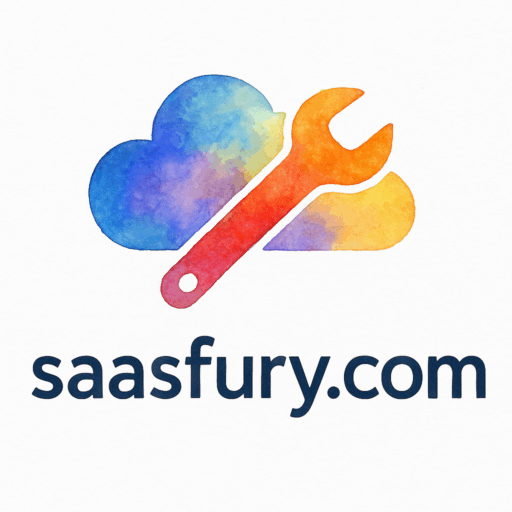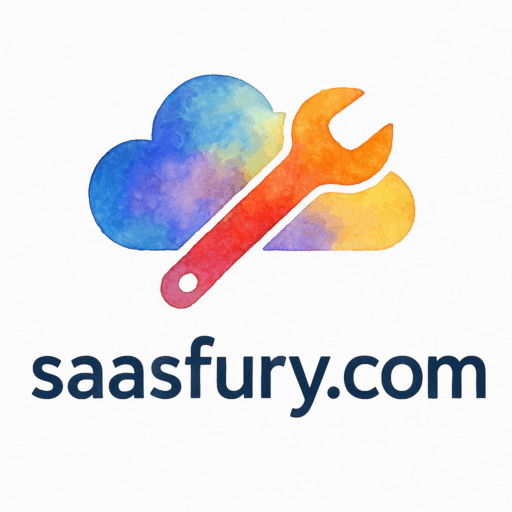Introduction: Why SaaS Tools Are Essential for Inventory Tracking
Inventory management is the backbone of any business dealing with products. Whether you run a small e-commerce store or a large retail chain, tracking your inventory can make or break your operations. Manual spreadsheets may have worked decades ago, but today’s fast-paced business environment demands smarter, faster, and cloud-powered solutions. That’s where SaaS tools come in—they make inventory tracking seamless, efficient, and cost-effective.
In this article, we’ll explore eight of the best SaaS tool recommendations for inventory tracking, dive into their features, and share tips for choosing the right one for your business.
Understanding SaaS in Inventory Management
What is SaaS?
SaaS stands for Software as a Service. Instead of installing heavy software on your computers, SaaS allows you to access tools directly from the cloud. Think of it like Netflix, but for business applications—you pay a subscription, log in, and enjoy the features without worrying about updates or maintenance.
Benefits of SaaS for Small and Large Businesses
For small businesses, SaaS eliminates upfront costs and makes powerful tools affordable. For larger enterprises, it offers scalability, flexibility, and advanced integrations that simplify even the most complex operations. In short, SaaS is like having a full business tools department working in the background—without the payroll.

The Importance of Inventory Tracking
Avoiding Stockouts and Overstocks
Have you ever walked into a store, only to find your favorite product out of stock? It’s frustrating. On the flip side, holding too much inventory eats into your cash flow. Proper tracking ensures the right balance.
Enhancing Customer Satisfaction
Happy customers are repeat customers. By using inventory management tools, businesses can track demand trends and ensure timely delivery—keeping customers loyal.
Improving Cash Flow
Every unsold product sitting in storage is money locked away. Inventory tracking frees up cash by reducing dead stock and optimizing purchasing decisions.
Criteria for Choosing the Right SaaS Inventory Tool
Scalability and Flexibility
Your tool should grow with your business. What works for a 10-item store should also adapt when you expand to 1,000 SKUs.
Ease of Integration
If your inventory tool doesn’t integrate with e-commerce platforms, POS systems, or accounting software, it’s like owning a smartphone without internet—it defeats the purpose.
Real-Time Data and Analytics
The best SaaS tools provide live updates so you always know your stock levels, sales data, and purchase needs.
Cost-Effectiveness
Don’t just look at the price tag—evaluate the value. The cheapest option may lack the features that save you money long-term.
8 SaaS Tool Recommendations for Inventory Tracking
1. TradeGecko (QuickBooks Commerce)
A favorite among online sellers, TradeGecko offers real-time inventory tracking, order management, and seamless integration with QuickBooks. It’s ideal for retail and e-commerce businesses that want scalability.
2. Zoho Inventory
Zoho’s all-in-one suite includes everything from inventory tracking to multi-channel selling. It’s budget-friendly and integrates well with other Zoho products, making it a strong fit for small business owners.
3. Cin7
Cin7 is like the Swiss Army knife of inventory management. It connects inventory, POS, warehouse, and even third-party logistics into one platform. Great for growing omnichannel businesses.
4. NetSuite ERP
For enterprises that need heavy-duty inventory tracking, NetSuite ERP provides advanced reporting, automation, and supply chain management tools.
5. Fishbowl Inventory
Fishbowl integrates directly with QuickBooks and Xero, making it a solid choice for small to mid-sized businesses seeking professional services in warehouse and manufacturing.
6. Ordoro
Ordoro shines in shipping and dropshipping management. It also includes kitting and bundling features—great for businesses selling subscription boxes or running e-commerce stores.
7. Stitch Labs (Square for Retail)
Recently acquired by Square, Stitch Labs offers inventory solutions designed for retail businesses managing multi-channel sales.
8. Unleashed Software
Unleashed specializes in real-time inventory control and reporting. Manufacturers and distributors love its batch tracking and cost analysis features. It’s particularly useful for industries like hospitality and healthcare where accuracy is crucial.
Comparing the Best SaaS Inventory Tools
Features Overview
- TradeGecko: E-commerce integration
- Zoho Inventory: Budget-friendly automation
- Cin7: All-in-one flexibility
- NetSuite: Enterprise power
- Fishbowl: Manufacturing focus
- Ordoro: Dropshipping and shipping
- Stitch Labs: Retail specialization
- Unleashed: Real-time analytics
Pricing Insights
Prices vary—Zoho starts as low as $0 (free plan), while NetSuite can run into thousands per month. Always match your budget with your needs.
Pros and Cons
Each tool has strengths and weaknesses. For instance, Cin7 is powerful but complex; Zoho is simple but may lack enterprise-level scalability.
How SaaS Inventory Tools Impact Different Industries
Retail & E-Commerce
From Shopify to Amazon, SaaS tools prevent overselling and streamline order fulfillment for retail software solutions.
Hospitality & Food Service
Restaurants and hotels benefit from tracking perishable items, avoiding waste, and improving menu planning. See how hospitality SaaS tools optimize efficiency.
Healthcare & Wellness
For clinics and pharmacies, accurate tracking ensures compliance and timely patient care. Tools listed under medical SaaS help with patient records and inventory.
Professional Services
Even non-product-based industries use SaaS to manage supplies, tech equipment, and resources, as seen in consulting solutions.
Future Trends in SaaS Inventory Tracking
AI and Machine Learning
Imagine software predicting your stock needs before you even realize it. AI-driven SaaS tools are already making this a reality.
Cloud-Based Automation
Automation will handle routine tasks like reordering and supplier communication—saving hours of manual work.
Omnichannel Integration
Businesses will increasingly demand tools that unify inventory across online, offline, and mobile channels, enhancing e-commerce operations.
Common Mistakes to Avoid with SaaS Inventory Tools
Ignoring Training and Onboarding
The best tool is useless if your team doesn’t know how to use it.
Choosing Price Over Features
Don’t let low costs blind you—focus on the tool that adds real business value.
Not Leveraging Analytics
Most SaaS tools come packed with reports. If you’re not analyzing them, you’re leaving money on the table.
Tips for Maximizing SaaS Inventory Tools
Regular Updates and Audits
Schedule regular inventory audits and update your software to get the best performance.
Staff Training
Invest in training to help your team make the most of the software.
Integrating with Other Business Tools
From CRM to scheduling systems, connecting platforms ensures smooth business operations. See more in scheduling SaaS solutions.
Conclusion
SaaS inventory tracking tools are no longer a luxury—they’re a necessity. Whether you’re running a small online store or managing a global enterprise, choosing the right tool can revolutionize how you track, manage, and optimize your stock. From budget-friendly Zoho to enterprise-grade NetSuite, the options are vast, and the right fit depends on your unique business needs.
Investing in SaaS tools today sets you up for growth, efficiency, and customer satisfaction tomorrow.
FAQs
1. What is the best SaaS tool for small businesses?
Zoho Inventory is a great choice for startups and small businesses thanks to its affordability and ease of use.
2. Can SaaS tools handle multi-channel inventory tracking?
Yes, tools like Cin7 and Stitch Labs are built specifically for omnichannel operations.
3. Are SaaS inventory tools expensive?
Not necessarily. Options like Zoho start free, while advanced tools like NetSuite cater to enterprises with bigger budgets.
4. Do these tools work with e-commerce platforms?
Absolutely. Most SaaS tools integrate with Shopify, Amazon, WooCommerce, and other e-commerce solutions.
5. Can SaaS tools reduce inventory waste?
Yes, by offering real-time insights, they help businesses order smarter and reduce overstocking.
6. Are SaaS tools secure?
Reputable SaaS providers use encryption, backups, and compliance standards to ensure data safety.
7. How do I choose the right SaaS tool for my business?
Focus on scalability, integrations, budget, and the unique features your industry—be it hospitality, healthcare, or retail—requires.

